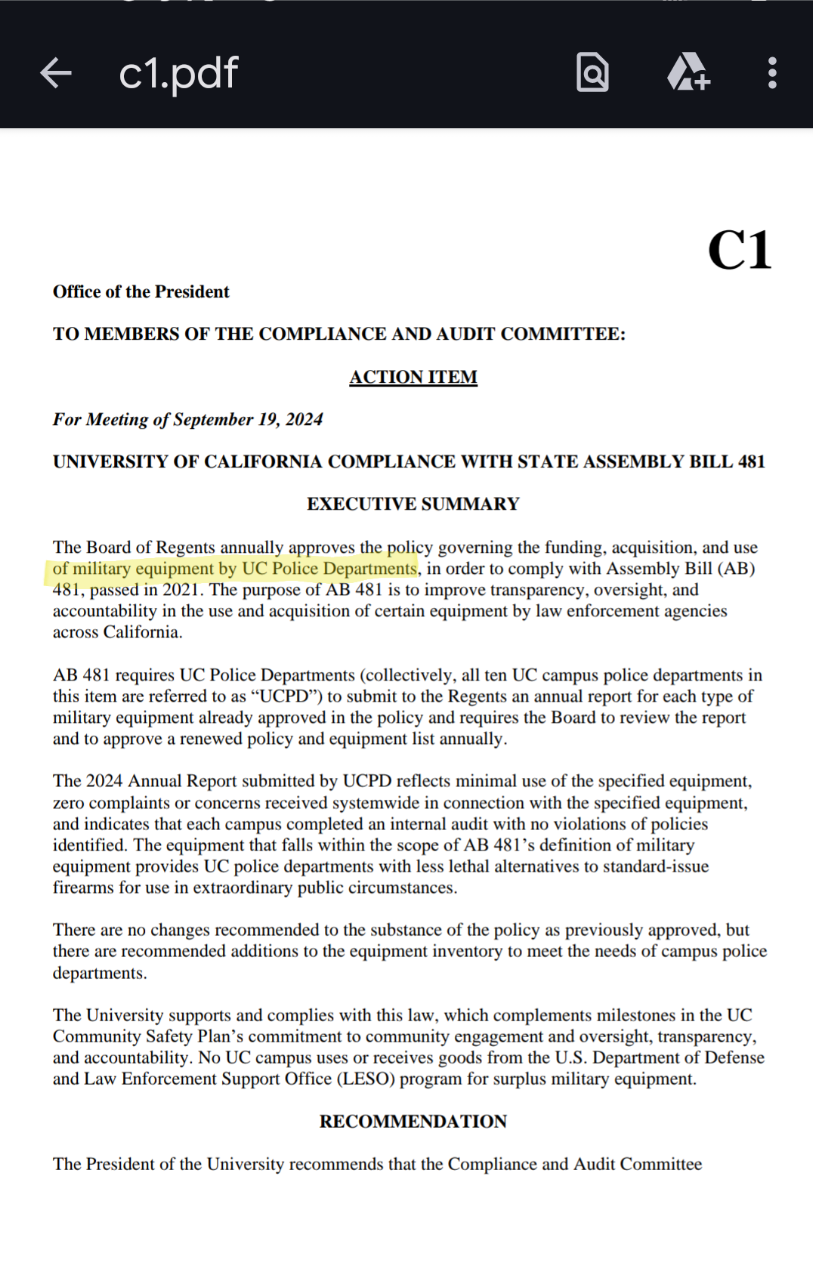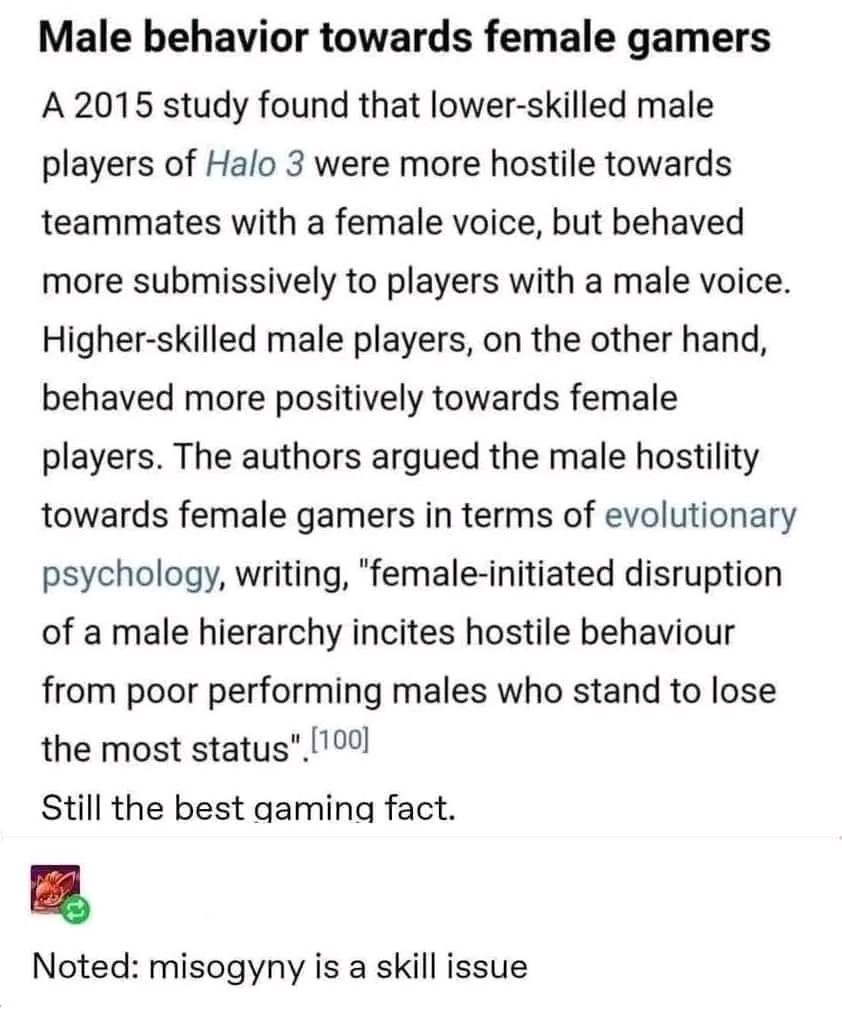ComradeKingfisher
spoiler
Each time you use AI to generate an image, write an email, or ask a chatbot a question, it comes at a cost to the planet.
In fact, generating an image using a powerful AI model takes as much energy as fully charging your smartphone, according to a new study by researchers at the AI startup Hugging Face and Carnegie Mellon University. However, they found that using an AI model to generate text is significantly less energy-intensive. Creating text 1,000 times only uses as much energy as 16% of a full smartphone charge.
Their work, which is yet to be peer reviewed, shows that while training massive AI models is incredibly energy intensive, it’s only one part of the puzzle. Most of their carbon footprint comes from their actual use.
The study is the first time researchers have calculated the carbon emissions caused by using an AI model for different tasks, says Sasha Luccioni, an AI researcher at Hugging Face who led the work. She hopes understanding these emissions could help us make informed decisions about how to use AI in a more planet-friendly way.
Luccioni and her team looked at the emissions associated with 10 popular AI tasks on the Hugging Face platform, such as question answering, text generation, image classification, captioning, and image generation. They ran the experiments on 88 different models. For each of the tasks, such as text generation, Luccioni ran 1,000 prompts, and measured the energy used with a tool she developed called Code Carbon. Code Carbon makes these calculations by looking at the energy the computer consumes while running the model. The team also calculated the emissions generated by doing these tasks using eight generative models, which were trained to do different tasks.
Generating images was by far the most energy- and carbon-intensive AI-based task. Generating 1,000 images with a powerful AI model, such as Stable Diffusion XL, is responsible for roughly as much carbon dioxide as driving the equivalent of 4.1 miles in an average gasoline-powered car. In contrast, the least carbon-intensive text generation model they examined was responsible for as much CO2 as driving 0.0006 miles in a similar vehicle. Stability AI, the company behind Stable Diffusion XL, did not respond to a request for comment.
AI startup Hugging Face has undertaken the tech sector’s first attempt to estimate the broader carbon footprint of a large language model.
The study provides useful insights into AI’s carbon footprint by offering concrete numbers and reveals some worrying upward trends, says Lynn Kaack, an assistant professor of computer science and public policy at the Hertie School in Germany, where she leads work on AI and climate change. She was not involved in the research.
These emissions add up quickly. The generative-AI boom has led big tech companies to integrate powerful AI models into many different products, from email to word processing. These generative AI models are now used millions if not billions of times every single day.
The team found that using large generative models to create outputs was far more energy intensive than using smaller AI models tailored for specific tasks. For example, using a generative model to classify movie reviews according to whether they are positive or negative consumes around 30 times more energy than using a fine-tuned model created specifically for that task, Luccioni says. The reason generative AI models use much more energy is that they are trying to do many things at once, such as generate, classify, and summarize text, instead of just one task, such as classification.
Luccioni says she hopes the research will encourage people to be choosier about when they use generative AI and opt for more specialized, less carbon-intensive models where possible.
“If you’re doing a specific application, like searching through email … do you really need these big models that are capable of anything? I would say no,” Luccioni says.
The energy consumption associated with using AI tools has been a missing piece in understanding their true carbon footprint, says Jesse Dodge, a research scientist at the Allen Institute for AI, who was not part of the study.
Comparing the carbon emissions from newer, larger generative models and older AI models is also important, Dodge adds. “It highlights this idea that the new wave of AI systems are much more carbon intensive than what we had even two or five years ago,” he says.
Google once estimated that an average online search used 0.3 watt-hours of electricity, equivalent to driving 0.0003 miles in a car. Today, that number is likely much higher, because Google has integrated generative AI models into its search, says Vijay Gadepally, a research scientist at the MIT Lincoln lab, who did not participate in the research.
Not only did the researchers find emissions for each task to be much higher than they expected, but they discovered that the day-to-day emissions associated with using AI far exceeded the emissions from training large models. Luccioni tested different versions of Hugging Face’s multilingual AI model BLOOM to see how many uses would be needed to overtake training costs. It took over 590 million uses to reach the carbon cost of training its biggest model. For very popular models, such as ChatGPT, it could take just a couple of weeks for such a model’s usage emissions to exceed its training emissions, Luccioni says.
This is because large AI models get trained just once, but then they can be used billions of times. According to some estimates, popular models such as ChatGPT have up to 10 million users a day, many of whom prompt the model more than once.
Studies like these make the energy consumption and emissions related to AI more tangible and help raise awareness that there is a carbon footprint associated with using AI, says Gadepally, adding, “I would love it if this became something that consumers started to ask about.”
Dodge says he hopes studies like this will help us to hold companies more accountable about their energy usage and emissions.
“The responsibility here lies with a company that is creating the models and is earning a profit off of them,” he says.
UCPD does not need GLs with gas or "less lethal" rounds to neutralize a shooter with body armor. If it was school shooters with level IV plates UCPD was preparing for they'd have bought rifles chambered in 7.62x51 and a few hundred AP rounds.
But they didn't. In explicit response to college kids protesting genocide they purchased AR15s, thousands and thousands of 5.56, GLs, tear gas, "less lethal" rounds, LRADs–tools only suited to intimidate, injure, disfigure, maim, and kill unarmed protestors.


Yes, and also for "less than lethal" rounds that can very much severely injure and kill a person when it hits the right spot.


spoiler
A study published in 2017 in the BMJ found that 3% of people hit by rubber bullets died of the injury. Fifteen percent of the 1,984 people studied were permanently injured by the rubber bullets, also known as “kinetic impact projectiles.”
Rubber bullets should be used only to control “an extremely dangerous crowd,” said Brian Higgins, the former police chief of Bergen County, New Jersey.
“Shooting them into open crowds is reckless and dangerous,” said Dr. Douglas Lazzaro, a professor and expert in eye trauma at NYU Langone Health.
In the past week, a grandmother in La Mesa, California, was hospitalized in an intensive care unit after being hit between the eyes with a rubber bullet. Actor Kendrick Sampson said he was hit by rubber bullets seven times at a Los Angeles protest.
Freelance photographer Linda Tirado said she was blinded by a rubber bullet at a protest in Minneapolis.
In an email, Minneapolis Police Department spokesperson John Elder said, “We use 40 mm less-lethal foam marking rounds. We do not use rubber bullets.”
Elder didn’t mention the brand name of the foam marking rounds used by Minneapolis police. But a website for the “Direct Impact 40 mm OC Crushable Foam Round” depicts a green, bullet-shaped product described as a “point-of-aim, point-of-impact direct-fire round.” The site says the projectiles are “an excellent solution whether you need to incapacitate a single subject or control a crowd.”
No one knows how often police use rubber bullets, or how many people are harmed every year, said Dr. Rohini Haar, a lecturer at the University of California-Berkeley School of Public Health and medical expert with Physicians for Human Rights. Many victims don’t go to the hospital.
Police are not required to document their use of rubber bullets, so there is no national data to show how often they’re used, said Higgins, now an adjunct professor at the John Jay College of Criminal Justice in New York. There are no nationally agreed-upon standards for their use.
When aimed at the legs, rubber bullets can stop a dangerous person or crowd from getting closer to a police officer, Lazzaro said.
But when fired at close range, rubber bullets can penetrate the skin, break bones, fracture the skull and explode the eyeball, he said. Rubber bullets can cause traumatic brain injuries and “serious abdominal injury, including injuries to the spleen and bowel along with major blood vessels,” said Dr. Robert Glatter, an emergency physician in New York City and a spokesperson for the American College of Emergency Physicians.
Firing rubber bullets from a distance decreases both their force and their accuracy, increasing the risk of shooting people in the face or hitting bystanders, Lazzaro said.
Physicians for Human Rights, a nonprofit advocacy group based in New York, has called for rubber bullets to be banned.
The British military developed rubber bullets 50 years ago to control nationalist rioters in Northern Ireland, although the United Kingdom stopped using them decades ago. Rubber bullets are used by Israeli security forces against Palestinian demonstrators. French police were criticized for using rubber bullets last year after dozens of “yellow jacket” demonstrators were blinded and hundreds were injured.
“Rubber bullets are used almost every day somewhere in the world,” Haar said. “Using them against unarmed civilians is a huge violation of human rights.”
Yup, it's all for the UCPDs

CW misogyny, SA, and discussion of .mil service
Trans guy here, forgive the rambling but edibles are hitting hard rn and I need to dump this somewhere. If anyone can relate or has had a different experience, please feel free to share with the class.
And Stone Butch Blues is already on my to-read list, but if anyone reads this braindump and can recc me theory that deals with any subject that's touched on I would be eternally grateful please and thank you :3

spoiler
Evo psych is bs and smarter people than I have discussed at length why that is. This pattern of behavior though is def something I've experienced and observed throughout my life, especially as the majority of my hobbies and workplaces have always been male dominated. What fucked me up the most tho was the form this behavior took in the .mil. It’s notable bc the .mil has an extreme and explicit form of institutionally enforced hierarchy so the behaviors are particularly toxic and unsubtle and vile.
I refrain from going into how race and class and sexuality etc affected the dynamics not because I didn’t see or experience it, but because I don't want to write ten thousand words rn. I might type it out and clean it up and post it here at some point bc it's been rattling around in my head for years and I need to process it. Until then, assume everyone involved is a wh*te cishet enlisted soldier from families of similar income levels.
||||||
The acceptance from high skill males was conditioned on demonstrated competence. There's always an initial distrust from the misogyny ofc, but the second I or any girl proved we could hang (i.e. be good at the job and perform at least some aspect of masculinity), the most skilled and professional guys took us under their wing and kept other boys from fucking with us.*
Skilled males treated the unskilled women slightly worse than they treated similarly unskilled men. Unskilled males treated unskilled women with more contempt than they treated other unskilled men, and the skilled women on par with the below average men.
If a woman met or exceeded the current cultural beauty standard (and thus performed too much femininity to be taken seriously by brains riddled with patriarchal brainworms), she was taken less seriously by both groups than plain janes and uggos—I counted myself among the latter and it was repeatedly made clear to me that my assessment was correct—that were at similar competence levels. If she was skilled she was taken slightly less seriously than the skilled plains/uggos. If unskilled she was take much, much less seriously.
Regardless of competence the attractive women had more success at the social aspect of the job and thus had slightly more opportunities given to them by less skilled males that had a high enough rank to grant them favors they hoped would result in them getting their dick wet. They often succeeded because they mostly targeted low ranking women who couldn’t really say no because of the implication. 
High rank unskilled males treated the unskilled plain/uggo women with disdain but more or less ignored them like they ignored low ranked unskilled men. With skilled plain/uggo women they had active contempt for them and went out of the way to fuck with them. If a skilled plain/uggo woman didn't have the protection of a high rank skilled man of equal or higher rank to the high rank unskilled man, skilled plain/uggo women were in for an especially miserable time.
Now that I pass as a cis guy and am stealth irl, I feel an immense relief that I'm no longer subjected to the treatment women get.
I'm still a militant feminist and revel in using cis male status to advocate for women and shut misogynistic behavior down, but like yeah, not being treated with automatic contempt because of my gender is so freeing. It's a similar reduction in the background stress I got from getting top surgery, and I sincerely cannot emphasize enough how freeing top surgery was.
Tbh it feels silly to say but I think I've got a sort of survivor's guilt from it. Because of the dysphoria rather than the hardship of being perceived as a women there's no way in hell I would ever go back, but I do feel like I abandoned the homies.**
*when I was in there was a soldier shortage and almost every unit was understaffed, so idk how much of this "acceptance" was driven by the necessity of needing every able body they could get to do the job. I'm curious to know if the pattern holds when they've enough skilled males. I’d also be interesting in knowing how each job and each branch’s culture influences the pattern.
**Until I was able to articulate this to myself, I respected but didn't really fully understand why some binary trans men that identified strongly as a butch lesbian or even non butch lesbian prior to realization/transitioning continued do so after transitioning. Like there's a whole culture to being a woman, a stronger culture to being a lesbian, and an even stronger culture to being a butch lesbian–culture and community is such an essential part of our lives that dropping them is like chopping off a favored limb, and no one should be obligated to chop off a limb.
Isn't there a boxer from the Philippines who's a trans guy?
Yeah, Hergie Bacyadan. The IOC is having him compete in the women's 75kg division as he's not on T yet.
Seems like he didn't just stumble into it, dude's been on the right side for a while
heartening to see Macklemore return to his roots. before he popped off decade ago, he was running in anti-capitalist radical circles in the west coast & did few fundraiser shows for us (grassroots anti-colonial, anti-capitalist migrant justice group). movements keep us grounded.
Love and respect to the west coast artists then and STILL holding it down for liberation, like Gabriel Teodros, Abyssinian Creole, Khingz who introduced me/us to Macklemore and invited him to be part of our events and into community & movement spaces.
https://twitter.com/HarshaWalia/status/1787643511451562328?t=Xg3Kdho0mP8ARXFyHPyMYQ&s=19
I don't know where you are, but where I live this has never been the sort of second hand stuff that is even remotely accessible to poor people.
Good point, the availability of secondhand equipment isn't something that ever crossed my mind.
I grew up in the California Bay Area. The PMC types buy equipment, use them for a season or less, then get rid of them on Craigslist and/or yard sales—the surplus drives the prices way down, especially during off-season. It's still too expensive if you're struggling to put food on the table and pay rent, but it's viable if there's breathing room in the budget.
In the 90s and 00s a decent set up of used jackets, pants, helmets, skis, and boots could be had for under $100, and last you for well over a decade. Hell, my dad is still using gear he bought in the 90s.
Gear is more expensive now. We recently had to kit up my cousin's bf, and we managed to scrounge everything for $155. He's a min wage worker, but in our cultures multigenerational living is the norm, and that reduces the cost of living enough that spending that much won't put him in the red. He also didn't have spend everything at once, because our family could loan him whatever he was missing while we searched for good deals.
Lift tickets also aren't what they used to be. Growing up, lift tickets at smaller resorts could be had for $10-15, so overall the sport was affordable for working class refugees with only a highschool education and a middling income. Now the cheapest lift tickets at the smallest resorts are $25, and that price is only available once a month.
Had my parents fled to the US now or within the last decade instead of when they did in the 80s, we wouldn't have been a skiing family. With the increase of lift ticket prices, we remain a skiing family only because we have all the gear already, and living with my parents lets me save up enough to buy us season passes. If I were living on my own I wouldn't be able to afford it, nor would my parents since they're on a fixed income.
Skiing with family and friends are some of my fondest memories, and introducing new people to the sport and watching them fall in love with it is phenomenal. Watching year after year as that joy becomes increasingly out of reach for the working class is enraging. Don't even get me started on the insulting, increasingly low pay of resort workers, destroying another solid avenue that working class kids used to use to afford slope time.
You could never really be poor and ski around here, but to the average middle class family it was doable. Now only those in, just below, or above the upper middle class can afford it. It's only going to get more bougie from here on out, which is a travesty.
There are endless tax payer money maintained ski routes in this country during winter that take over walking routes, hiking routes etc. You are not allowed to do anything there but ski during the ski season. The people who do it are all upper middle class or otherwise in a position where they can afford the equipment. The poors don't even get to use the area for walking during this time.
That blows big time, I'm sorry. While the resort slopes are exclusive to skiers, the miles and miles and miles of hiking trails in the Sierra Nevada are open to regular and snowshoe hikers, as well as cross country skiers. Y'all are getting hosed. We're all getting hosed. Death to capitalism.
I'd argue alpine skiing isn't bougie if you live within two to three hours of a mountain. Secondhand equipment is cheap, and lift tickets were affordable until relatively recently.
